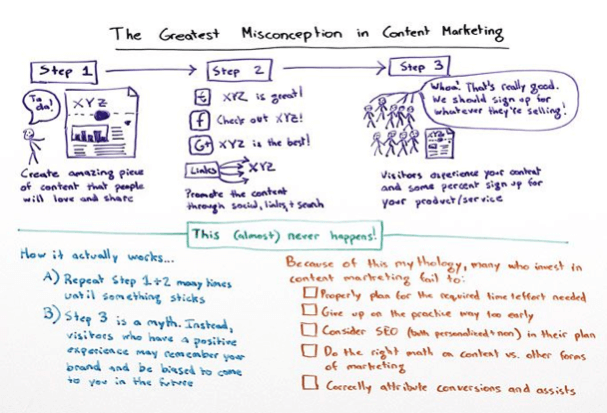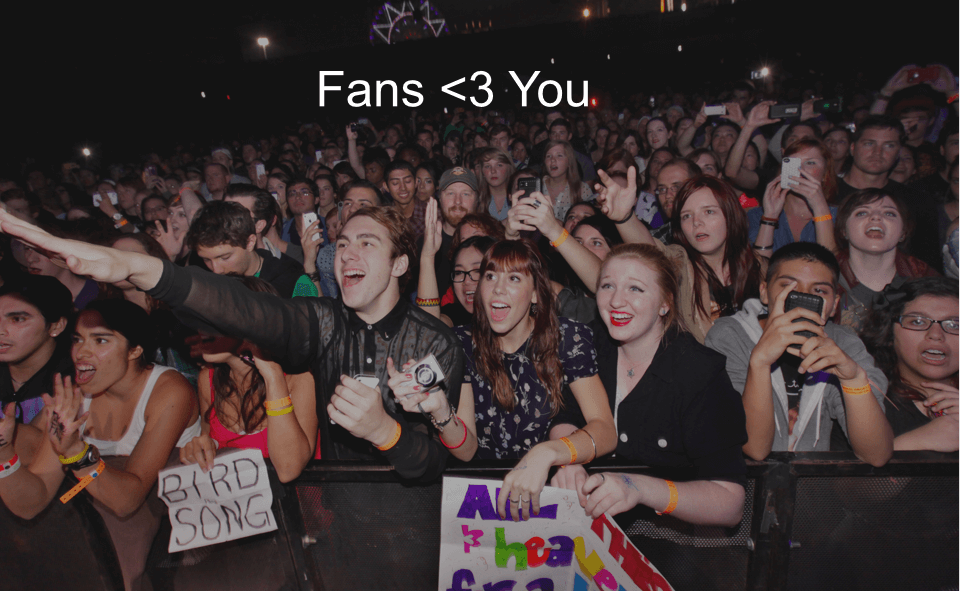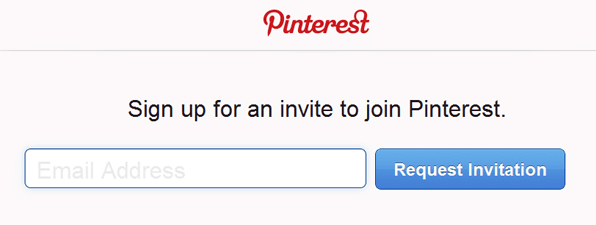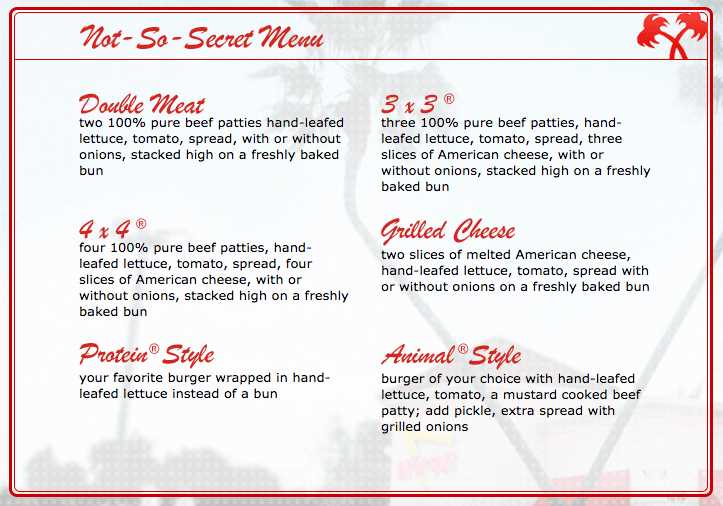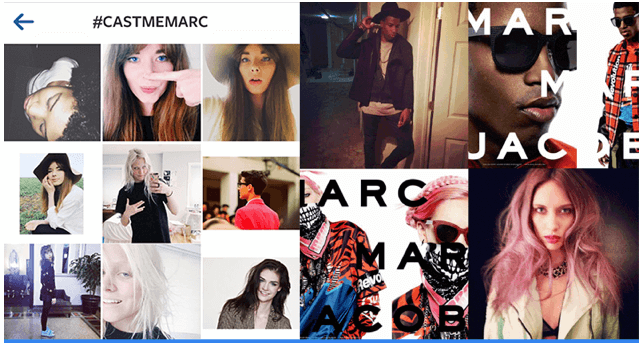You can’t measure your brand by revenue alone. In fact, brands often grow thanks to fans who may not even be customers, but who love to talk about them with anyone and everyone who will listen.
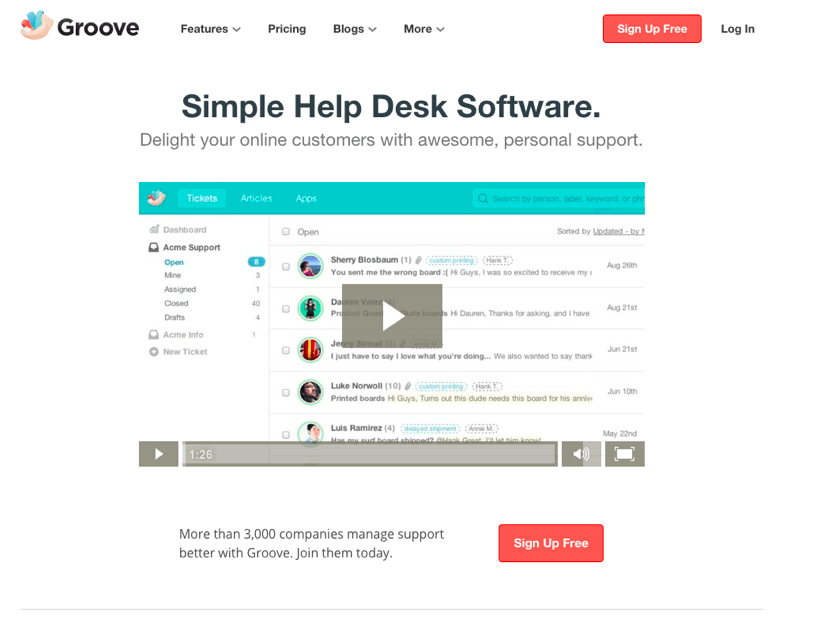
This is Groove. They’re a help desk software similar to Zendesk or desk.com.
This is me. I am a huge fan of the Groove blog, written by CEO Alex Turnbull.
I read all of their posts the moment they come out and comment on them.
I’m subscribed to the blog newsletter, which I frequently forward around to share posts.
I even once wrote Alex a fanmail letter about how much I love the blog (and he responded!)
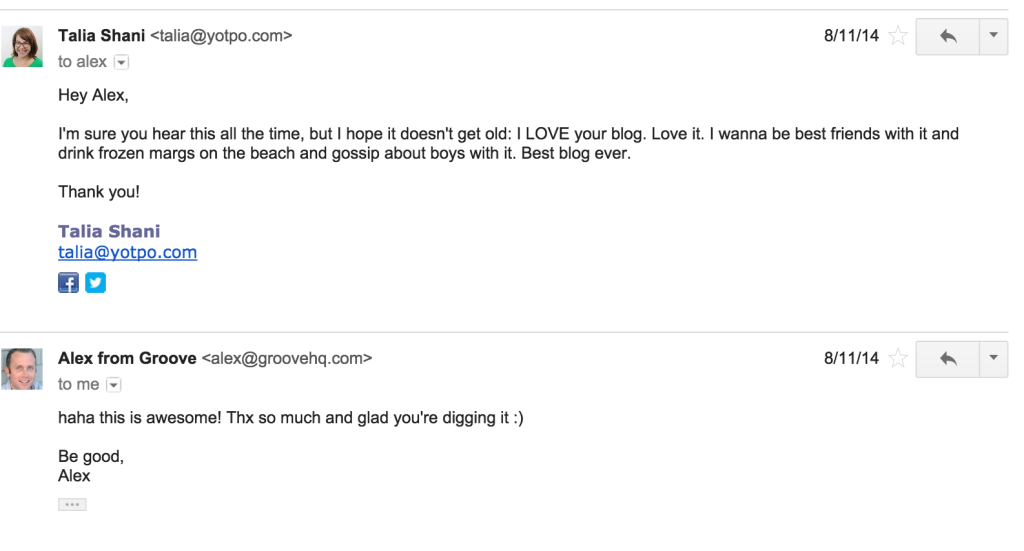 I’m basically the Groove blog’s biggest fan.
I’m basically the Groove blog’s biggest fan.
So, content marketing works! Right?
Wrong.
My company uses Zendesk.
I’m a marketer and, at my 70-person company, nobody cares about my opinion on help-desk software.
Also, I’m not planning on starting a business any time soon, so I won’t be in the market for a help desk.
I’m about as far from a decision-maker as Groove can get and, chances are, I’ll never be a customer.
So content marketing doesn’t work?
Also not true!
I may never be a customer, but I am a brand fan, and that’s about just as valuable.
Let me explain why.
Anyone who has seen Rand Fishkin’s great whiteboard video on The Greatest Misconception in Content Marketing has some idea of what I’m talking about.
In this video, Rand discusses the greatest myth about content advertising which is basically that people think the funnel works like this: You create content, people read that content and X% of them are like “wow, that’s great content, I should buy whatever they’re selling!”
Because this funnel is non-existent, a lot of companies give up on content marketing because they don’t see these results.
In reality, content marketing is not about “read blog > buy something” it’s about building trust, relationships and awareness over a series of touches.
The way Rand puts it:
– Rand Fishkin of MOZ
(By the way, Moz is another company who I love and promote and don’t give any money too).
Rand goes on to say Moz visitors average 7.5 visits to the site before signing up for the free trial.
So the truth is that the path from content to conversion is long and winding. And still some people may never convert.
But they are still valuable!
Why do brand fans matter if they don’t buy?
Customers shell over money for your stuff. Maybe they need something you happen to be selling. Maybe you had the best price. Maybe they’ll try you out and churn after 1 month of paying.
But they may not love your brand.
Brand ambassadors might not show their love with money, but you couldn’t buy the publicity they’ll give you: word-of-mouth marketing.
According to Jonah Berger, a professor of marketing at Wharton Business School at UPenn and expert on consumer buying behavior and social influence, word of mouth directly influences 20-50% of purchase decisions.
Why does word of mouth work?
- It’s more persuasive
According to Berger, Word of Mouth works because it’s more convincing than other forms of marketing. In other words, people are more likely to believe a friend telling them a product is great versus a brand telling them so.
- It’s more targeted
For example, I wouldn’t tell everyone about the great recipe for Zucchini Bread I just discovered. I’ll naturally share it with my few friends who I know like to bake — they’ll be more likely to appreciate and take advantage of the recommendation.
Fans <3 you
Your fans aren’t your fans because of the newest product or the biggest sale, they’re your fans because they love what you represent. And they’ll tell all their friends.
A study McKinsey did of 20,000 European consumers showed how just a few people accounted for an insane percentage of product recommendations. This varied depending on industry, foe example, in the shoe and clothing vertical, 5% of recommenders accounted for 45% of the influence.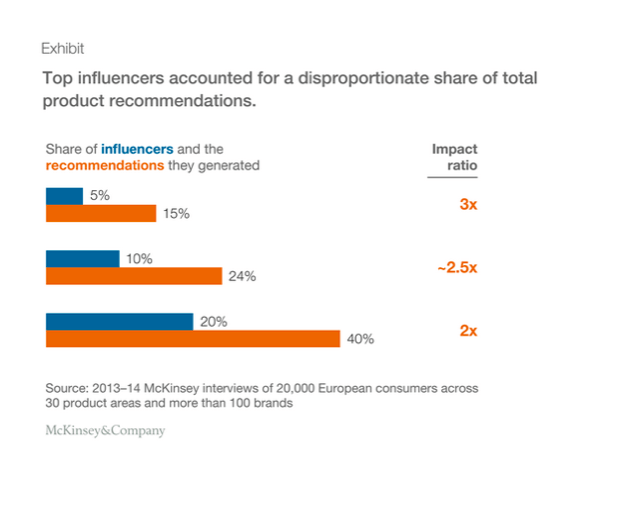 And it’s not just on social media. These consumers reported that ~40% of these referrals took place offline — in person or over the phone.
And it’s not just on social media. These consumers reported that ~40% of these referrals took place offline — in person or over the phone.
The better matching mechanism leads to 18% higher chance of retention and 16-25% higher CLTV.
Also, customers who come as a result of a referral are better than those who come without one.
The most comprehensive study done on referral customers to date looked at 10,000 customers of a German bank brand over 3 years.
Referred customers were 18% more likely to stay with the bank than non-referred ones, and also had 16-25% higher customer lifetime value.
The study attributed this to the “better matching mechanism” (which is also the reason employee referral programs for recruitment are so successful)
Someone familiar with a brand knows both the brand and their friends better — so they are in a prime place to create targeted, effective referrals.
How can you build a legion of brand ambassadors who will spread the word and bring in referrals?
Getting loyal brand fans relies on 3 key concepts:
- Create a customer community from exclusivity
- Build an emotional investment
- Reward fans
Create a community from exclusivity
“I don’t want to belong to any club that would have me as a member.” – Groucho Marx
As Groucho Marx noted, exclusivity is very desirable.
In fact, the scarcity heuristic — by which we place more value on things that are difficult to acquire– is hard-wired into our psychology.
What Marx got wrong is that people actually enjoy being invited to certain clubs — as long as they maintain that air of exclusivity.
Huge companies like Pinterest, Gmail and Spotify have all taken advantage of this by doing an initial invite-only launch.
In the case of Pinterest, the company was able to grow rapidly and still maintain exclusivity due to the fact that people needed to be invited (or receive invites from friends) to join.
People who were users were creating a buzz to show off their invites and because they felt like a part of an exclusive brand community.
And people who weren’t users were creating a buzz by asking for them.
Ultimately the company became the fastest to hit 10 million users, largely based on this strategy of exclusivity.
When people feel like they’re “in” on something — like they know something not everybody else does —they’ll develop a special loyalty to the brand.
The same way Pinterest, Gmail and Spotify give out millions of “exclusive” invites, big restaurant chains like In-n-Out and Starbucks have “secret” menus that build a personal connection by making customers feel like they’re in on the secret.
Businesses can copy this tactic by offering launch invites (LaunchRock is a great service for this), creating a Beta Testing group, offering VIP access to special features or promotions or even creating a “secret menu” of their own.
Build an emotional investment
A 2014 study looked at how badly the reputation of automotive brands were damaged after a big recall.
The study looked at Toyota, GM, Ford, and Hyundai, four companies that spent about the same amount of money on lawyers and had similar advertising (with similar budgets) and offered similar discounts after their recalls.
Toyota came out resoundingly on top.
Why?
Toyota’s fans have an emotional connection to the brand built from powerful messaging that re-instills the belief that Toyota is reliable, strong and durable.
Despite recalls, fans emotionally connect and believe this message, causing them to stay loyal despite slip-ups.
The lesson?
True fans who are emotionally connected to a brand will allow for more mistakes and forgive more easily.
This makes their loyalty extremely strong and valuable.
UGC is a great way to foster an emotional connection. Look at how brands like Marc by Marc Jacobs use user-generated content to advertise on Instagram and increase brand love, as well as build stronger relationships with their dedicated brand fans.
Reward fans
Rewards shouldn’t just go to paying customers.
Look for brand advocates who are repping your brand online and off, and find ways to reward them. Rewarding your fans shows them that they matter to you – and this is important if you want to keep them around.
Try to offer rewards for those who aren’t necessarily buying, but are spreading the word. It can be as simple as responding to a silly tweet, or as elaborate as sending a car to pick up a Twitter follower who was tired of taking public transportation in the snow.
This is what Virgin Airlines did in 2013 when they looked at their list of Twitter followers to see who was having a bad day and could use a pick-me-up.
They did everything from chauffer service, to delivering mittens and scarves to showing up at an office with 100 cupcakes.
Keep in mind, these weren’t even people who necessarily mentioned the brand — they were just Twitter followers.
But they certainly mentioned Virgin Airlines after the fact.
After the first few gifts were given and the buzz started, thousands of people also started tweeting at Virgin to share their bad days, hoping to get a surprise — spreading the word farther and having more of an impact than any marketing campaign.
The lesson?
Rewards your fans and they’ll spread the word! Fans may love you, but if they feel invisible, they may not be loyal forever.
Make sure you’re acknowledging the fans who may or may not spend money with you.
Whether it’s something small as a public mention on Twitter or big like sending them a gift, they will appreciate it and spread the word.
How to measure brand ambassadors
But, how do I measure love?
Granted, “brand love” is hard to measure.
But there are things you can track to see how much people love your brand and if that number is growing.
Here are four metrics you can look at to quantify brand love:
1) Referral traffic from social networks
Because a lot of brand obsession happens on social networks, referral traffic from social is a good number to look Mentions, shares and retweets on social.
Engagement is one of the surest ways to measure brand love, but you can throw page and post likes out the window.
Look for people who are actually sharing their brand fandom with their friends by focusing on mentions, shares and retweets — stuff that shows up on their social feeds, not yours.
2) Monitoring Google Trends for your company name
Though this is not necessarily direct proof of brand fans, if you start using the tactics I mentioned above, you should start seeing your name in Google Trends steadily increasing over time.
If this is happening, it probably means you’re doing a good job of creating and encouraging advocacy for your brand.
3) Create a list via multi-touch
Look at people who have a huge amount of touches with your brand but haven’t taken the final step like checked out your pricing page, requested a demo/trial or visited your checkout page — at Yotpo we use Kissmetrics for this.
Maybe they’ve downloaded tons of your content or visited your blog a million times, but because they haven’t shown any “ready-to-buy” behavior, chances are they aren’t converting — at least not anytime soon.
These people are brand fans. You should call them out and show them you appreciate it! Create an email that let’s them know “We’re cool with the fact that you like us but probably won’t convert.”
Conclusion
There you go — everything you need to know about identifying and engaging the powerful fans who can help you harness word-of-mouth marketing and grow your business even more.
Content marketing needs brand ambassadors. And brand fans may not always be customers who convert — but that doesn’t mean that they don’t matter.





